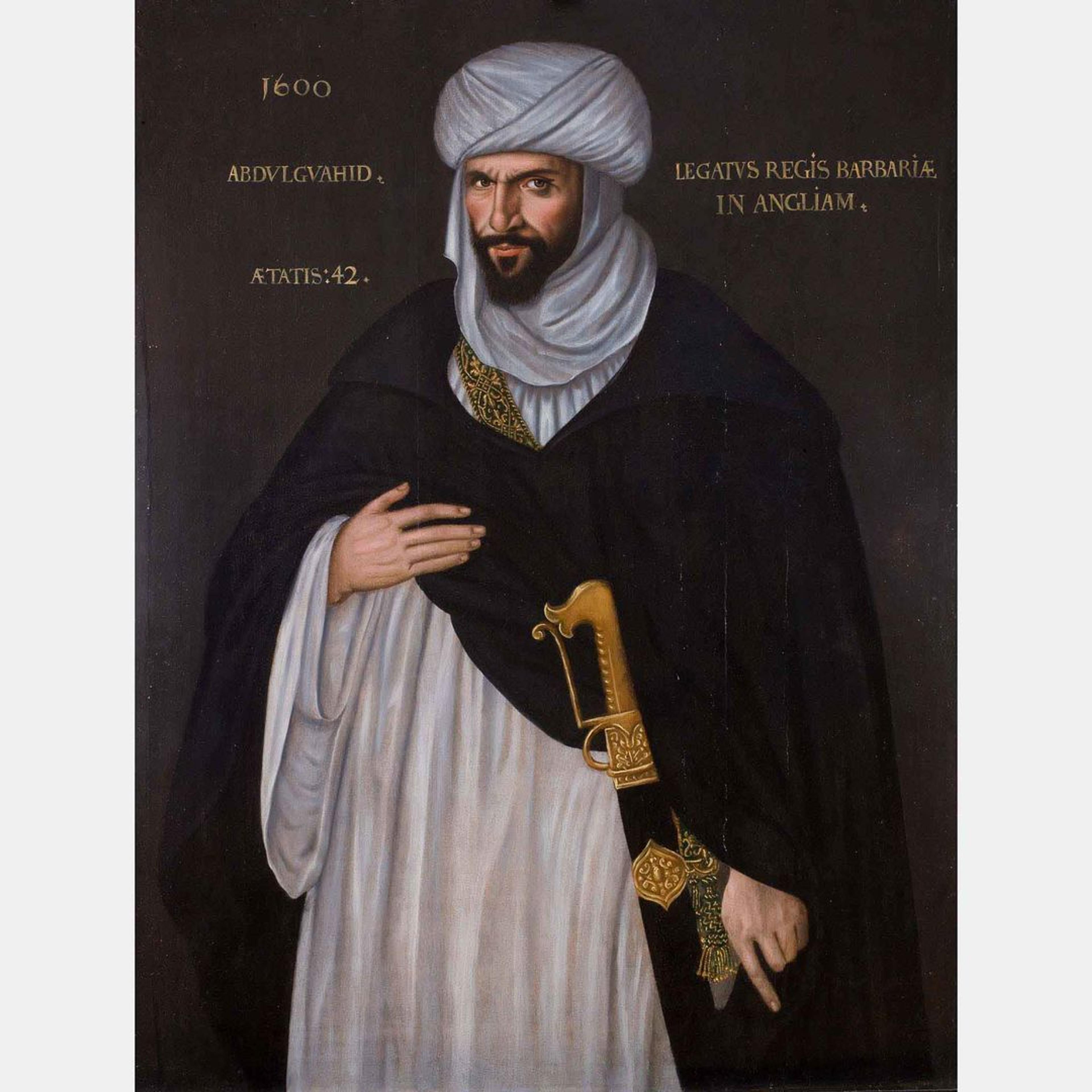Audio Guide

588. Abd el-Ouahed ben Messaoud ben Mohammed Anoun, Moorish Ambassador to Queen Elizabeth I, British Painter, 1600
ADAM EAKER:
This is a portrait and a story that I think may be surprising to many visitors. As far as we know, it’s the earliest surviving portrait of a Muslim to be made in England. And it depicts the Moroccan ambassador to Elizabeth I’s Court.
NARRATOR:
The ambassador is shown here in traditional Moroccan dress. The pointing finger of one hand draws attention to his prominent sword.
In 1600, the Sultan of Morocco, Ahmed al-Mansur, was looking to cement new alliances.
ADAM EAKER:
England and Morocco already had close trade ties. The English were avid consumers of Moroccan sugar. And al-Mansur was eager to expand these trade ties into a political alliance against the shared enemy of Spain.
NARRATOR:
Court records describe the Queen receiving the ambassador with great pomp and ceremony at her royal palaces:
FEMALE VOICE:
Here was a royal Preparation in the manner of his receiving; rich Hangings and Furnitures sent for from Hampton Court; the Guard very strong, in their rich Coats; a full Court of Lords and Ladies. He was brought to the Gallery, where her Majesty sat at the further End in very great State, and gave him audience.
NARRATOR:
The ambassador’s visit made a big impression on Londoners. But the sight of a Moroccan visitor may not have been so unusual.
ADAM EAKER:
We often assume that sixteenth-century England was a relatively homogenous place. But recent research has shown us that that simply was not true. People of African origins were at all levels of society, whether they were emissaries to the court, like the ambassador you see here, or people working in households and in commercial districts of London.
###